Cherry fights mechanical switch copycats with a new, yet familiar, lineup.
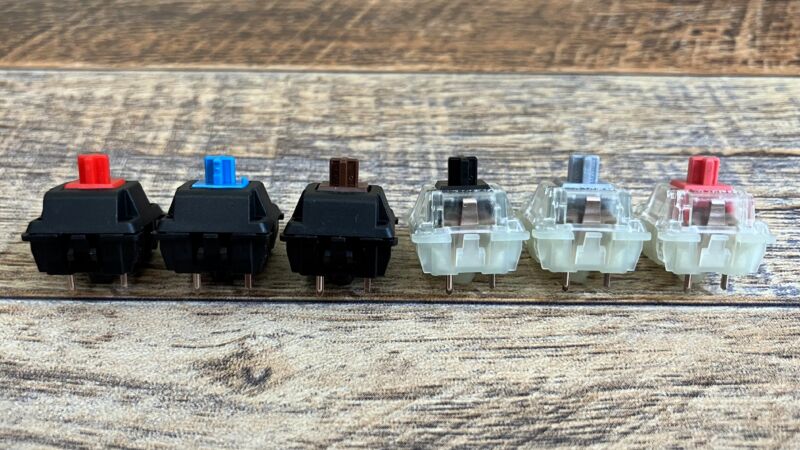
Cherry's new MX2A mechanical switches (from left to right): Red, Blue, Brown, Black, Speed Silver, Silent Red.
Scharon Harding
For 20 years, Cherry's patent on mechanical switches made it the only player around. That patent's expiration around 2014, though, released the floodgates and allowed countless copycats and switches with varying levels of modification to the cross-stem design to pour in. Typically, consumer choice is a good thing, and there are companies making switches that offer much different (sometimes better) experiences than the switches Cherry makes.
But there are many mechanical switches these days that don't add anything to the market. Some rip off what Cherry already offers with a cheaper price tag or only help mechanical keyboard makers save money by not paying another company for switches.
Seemingly in response, Cherry announced its MX2A series of mechanical switches this week. The new switches are almost identical to the company's MX Red, Silent Red, Blue, Brown, Speed Silver, and Black counterparts. The differences are inside the switches. In most cases, I noticed improvements to the feel of the new switches, but are they enough to warrant the introduction of even more switches and, likely, confusion?
Cherry’s MX2A switches
Cherry has listed eight switches in the MX2A series: Red, Silent Red, Brown, Blue, Speed Silver, Ergo Clear, and Clear Top. Cherry didn't announce MX2A versions of other switches, like its MX Green. Regarding additional MX2A switches, Cherry's press materials only say that Cherry's "always looking for ways to improve."
The MX2A isn't replacing the original MX series "for the moment," Cherry's press materials said. Instead, the MX2A will represent more premium, expensive options alongside the original MX series.
So what, exactly, makes MX2A switches the high-end option?
Internal improvements
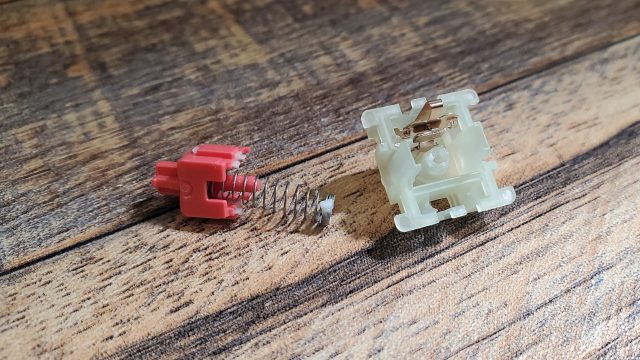
Inside the MX2A Silent Red. The white stuff on the spring and edge of the bottom housing's
socket dome are Cherry's lubricant.
Scharon Harding
The point of the new switches, according to Cherry, is "smoother actuation and improved acoustics" delivered through a few internal upgrades.
First, the socket dome in each switch's lower housing now has a "radius-convexed" shape, as Cherry put it, to help keep the spring centered and "improve sliding properties."
Unlike with standard MX switches, the socket dome is polished with diamonds and lubricated with an oil-based grease that's similar to the popular Krytox GPL 205 Grade 0, Cherry claims. When I opened some switches and touched it myself, the lube felt slippery without being excessively greasy or thick.
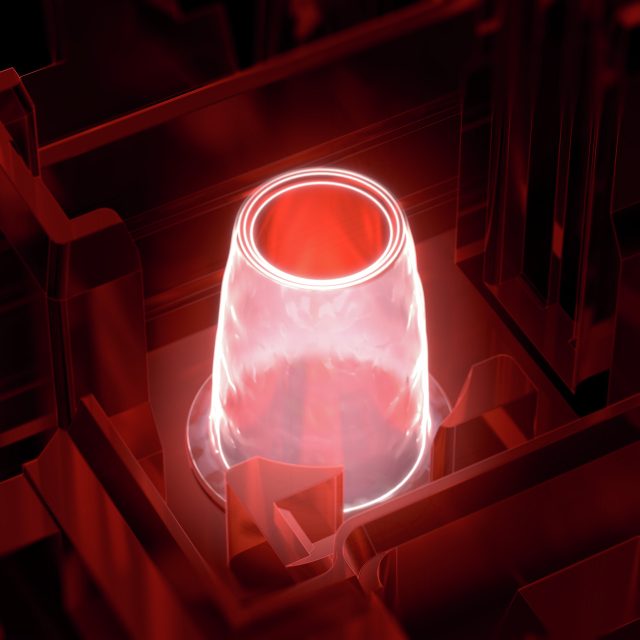
Factory-applied lube is around the outside of the dome sticking out of the switch's bottom housing.
Cherry
Instead of a cylindrical-shaped spring, MX2A switches use a barrel-shaped one, which is narrower at its top and bottom. This is supposed to reduce "spring deformation and scratching," as the spring's movement is "nearly contactless."
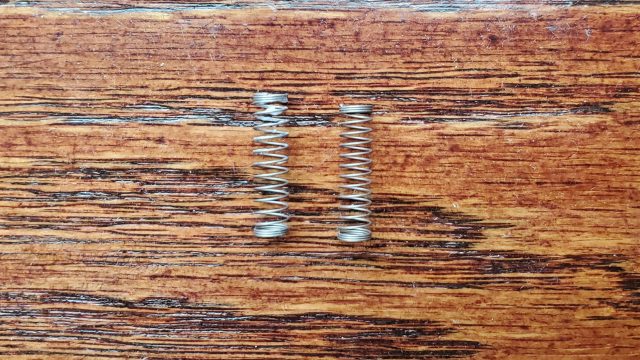
New barrel spring (left) versus standard cylindrical spring (right).
Scharon Harding
Cherry also added a "crown" of six "ribs" to the stem's opening to help keep the spring centered, reduce wobble, and provide "consistent feel and sound."
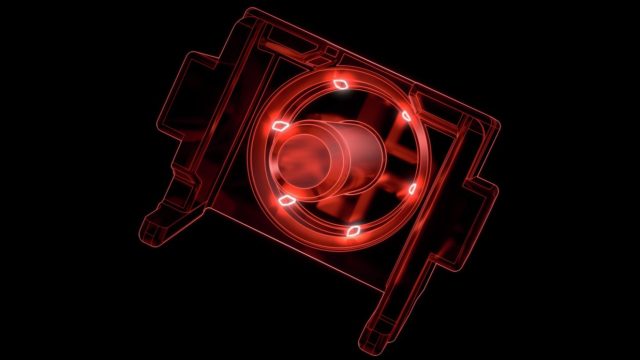
Cherry's depiction of the "ribs" inside the stem. They're very hard to see in person but look like
six raised lines going around the circular opening.
Cherry
As confirmed when I opened my sample switch, the MX2A Silent Reds don't have a crown of ribs. Also, Cherry said the new Blue switches don't have lube or a barrel spring due to "technical considerations." I asked Cherry what those technical considerations are and will update if I hear back.
Hands-on
Cherry sent me three samples of each new switch announced on Thursday. That's not enough to build a keyboard or make a firm judgment on the new switches. However, I could compare them to the original MX switches, which is enough for an early impression.
One thing I'll note, though, is that because I don't have enough of either switch to fill out a keyboard, I wasn't able to reach a full understanding of each switch's sound profile during heavy typing sessions.
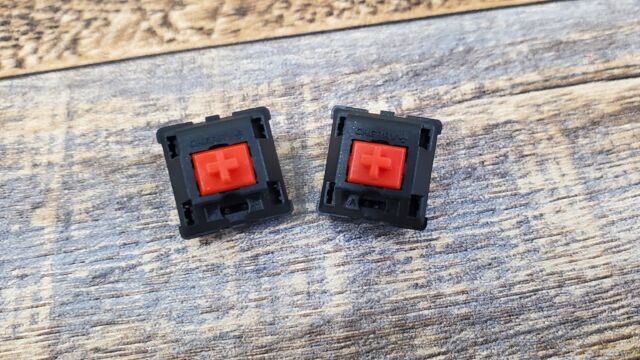
Can you tell the difference between Cherry's MX2A Red (left) and MX Red (right) by looks? Me neither.
Scharon Harding
In general, the most noticeable change was less keycap wobble. Nearly every switch had at least a little keycap wobble reduction compared to its predecessor.
The new Blue switch, however, seemed to have about the same amount of wobble. This could be due to it lacking a barrel spring like the others. However, the MX2A Silent Reds had remarkably less keycap wobble despite lacking a barrel spring. Meanwhile, the MX2A Red and MX2A Brown switches only showed slight improvements in keycap wobble and more wobble than highly stable alternatives, like Kailh's Box Red and Box Brown.
The new Red and Brown switches felt less scratchy when depressing, and so did the new Silent Reds. Pressing and releasing the MX2A Brown and MX2A Blue switches also felt like they had a smoother, more unified movement than before.
The MX2A Browns also seemed to have a more unified sound, rather than a few layers of sound, when pressed. And the MX2A Blues had a more discernible bump when depressing and, especially, when releasing.
The Black switches felt smoother to press and release than their predecessors. Unfortunately, I only have a Kailh Speed Silver switch to compare against the MX2A Speed Silver, but the latter was smoother than the Kailh alternative, which felt more sluggish when resetting.
Price and availability
Smoother actuation, less scratchiness, and less keycap wobble fetch a higher price. On Cherry's website, most of the new MX2A switches are $5 more for a 35-pack than their predecessors. New Speed Silvers are only $3 more, and new Ergo Clears are $7 more.
The first keyboard with MX2A switches preinstalled is Cherry's XTRFY K5 V2. Its product page lists it at $149 and says it'll be available in "late 2023." Cherry is also letting shoppers customize its XTRFY K5 with MX2A switches. Cherry says the MX2A switches should be available through its partners now, too.
Battling an overcrowded market... with more products
Based on my short time with a limited number of samples, longtime Cherry MX users will appreciate some improvements to the MX2A switches. These switches aren't huge industry game-changers, but they deliver enough upgrades to put Cherry on par with or ahead of some competitors.
But with the same life span expectations, specs, and appearance, it's hard to tell the new switches from the old. Newcomers and many who haven't used Cherry switches a lot will struggle to immediately notice the difference without a side-by-side comparison.
That could lead to confusion in the switch market, which is already overstuffed with numerous switches that feel, look, and are specced similar to Cherry MX switches. And shoppers already dealing with mechanical switch fatigue have yet another, extremely MX-like, series of switches to compare against—and consider paying more for.
Cherry says it will keep MX2A switches and their MX counterparts around simultaneously for now, but I think it would make sense to phase out the ones it invented in the 1980s to avoid confusion and put its best foot forward. It's nice to offer customers a lower-priced option, but it's hard to see why we need the original MX switches if the new ones are better without being off-puttingly different. It would also make sense to phase out the old ones if cheaper rivals, like Kailh Box switches, offer a similar or, in some cases, better (like with keycap wobble) experience.
It's not Cherry's fault everyone's copying its style, but the last thing the mechanical keyboard space needs is more switches.
Listing image by Scharon Harding
Source


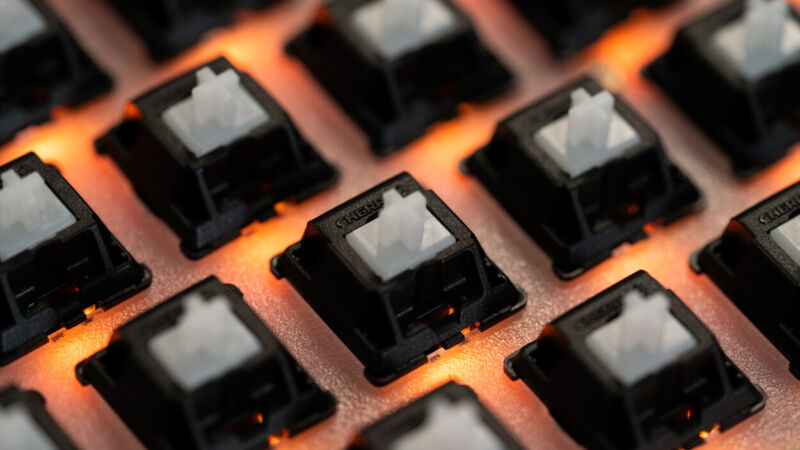
3175x175(CURRENT).thumb.jpg.b05acc060982b36f5891ba728e6d953c.jpg)







Recommended Comments
There are no comments to display.
Join the conversation
You can post now and register later. If you have an account, sign in now to post with your account.
Note: Your post will require moderator approval before it will be visible.